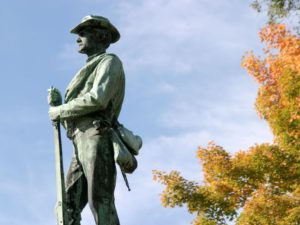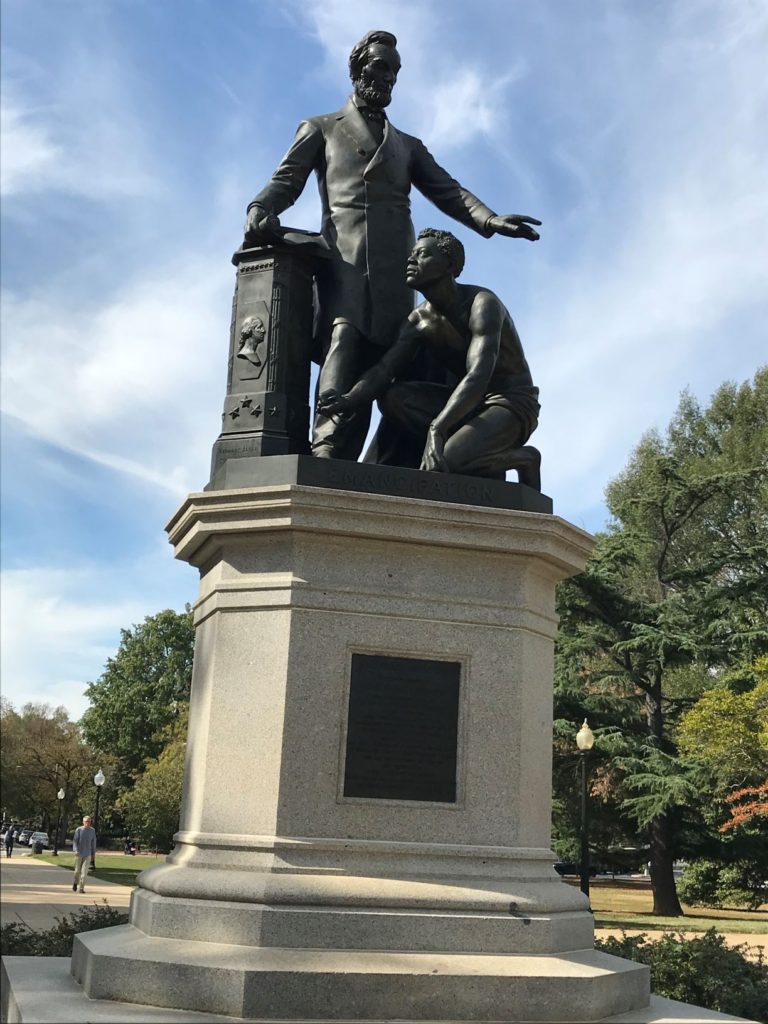 As I continue to explore “The Rational Case for Removing Confederate Monuments,” a key question has arisen: Can we add context to Confederate monuments and keep them in place? [Note: Also see my post: Do we ‘erase history’ by removing confederate monuments?]
As I continue to explore “The Rational Case for Removing Confederate Monuments,” a key question has arisen: Can we add context to Confederate monuments and keep them in place? [Note: Also see my post: Do we ‘erase history’ by removing confederate monuments?]
Most of the existing Confederate monuments (statues, as well as school, army base, and street names) remain standing in the locations in which they were placed over the last century. A small number have been removed, although removals are still occurring as local and state communities grapple with the question. A tiny number were pulled down during the racial justice protests in 2020. Little has been done to the remaining monuments, but there have been calls to leave them in place and add additional context.
A good illustration of the difficulties of adding context comes from a statue of Abraham Lincoln that had been targeted for forcible removal during the summer of 2020. The Emancipation Memorial, also called the Freedman’s Memorial, is not a Confederate statue. It was erected as a commemoration of Lincoln’s Emancipation Proclamation and freedom for enslaved African Americans. The funds for the statue were raised entirely from freed slaves and Frederick Douglass gave the keynote address at its dedication in 1876. The black male figure is modeled after a specific freed slave named Archer Alexander. This history would seem to make the statue immune to attack. However, the design includes a standing Lincoln with a crouched African American man breaking his chains and apparently rising to freedom. This “superior” positioning of a white male versus “inferior” positioning of a black male was controversial from the beginning (the funders had no say in the statue design). In our current time, the third time period reflected by all statues, many believe the design to be inappropriate. Historians and the public alike have debated what to do with the statue, if anything.
As with Confederate statues, some have suggested that the Emancipation Memorial can be augmented with additional context. So what context might be added?

Within a week after dedicating the Emancipation Memorial, Frederick Douglass expressed in a newspaper advertisement that the design had some problematic elements. He suggested that additional bronze figures might be added around the statue to complement, and more fully contextualize, the main Lincoln/Alexander artwork. Nothing was done at the time and today there is a legal problem in doing so. The statue is owned and maintained by the National Park Service, which is barred by law from removing – or adding – any additional statues. Given today’s congressional trend toward inaction, the idea of Congress passing a law to allow additional figures seems remote. [DC delegate Eleanor Holmes Norton introduced a bill in the summer of 2020 to have the Emancipation Memorial removed, but as of this writing no further action has occurred.]
Forgetting this logistical roadblock, historians and the public have offered various options for adding statues to provide a fuller picture. They include turning the statue again so that the Archer Alexander figure is looking across the park to the Mary McLeod Bethune statue. [The entire Emancipation Memorial statue had been turned 180 degrees in the 1970s to face the newly installed Bethune statue; Bethune was a black educator and civil rights activist] Others have suggested statues of Frederick Douglass, Sojourner Truth, and/or Harriet Tubman be added. There is also a suggestion that the statue be replaced by one featuring Lincoln and Douglass standing together, eye-to-eye, shaking hands, which would show them as equal statesmen. As noted, however, the idea of adding statuary seems a losing battle on NPS land.
Another suggestion is to add signage with additional context. Again, the Emancipation Memorial shows the difficulty and apparent ineffectiveness of this option. During two “teach-ins” conducted in the summer of 2020 at the Emancipation Memorial, including one where protest activists expressed their contempt for the statue and attempted to arouse the gathered crowd to pull it down, many attendees said they were unaware of the history noted above (Funding by former slaves, Frederick Douglass dedication, Archer Alexander figure). And yet, the Memorial itself contains a large (3 foot x 5 foot) plaque on the side of the pedestal explaining the funding process, including that Charlotte Scott, a former slave, had contributed the first $5. People don’t read, or don’t remember, plaques. Howard University Lincoln scholar Edna Greene Medford recently noted that statues are built to be seen, not read. Given historical patterns, virtually no one would see, or retain, any additional context signage added to existing monuments.
Costs and logistics would also seem to be prohibitive. Any additional context signage would have to be permanent; paper or temporary billboard signage wouldn’t last long enough to be meaningful. This means that additional context would need to be included on permanent, probably bronze, plaques installed on or near the statues. It’s unclear that NPS limitations would allow even this change. Bronze (or marble or any other permanent material) is expensive. The cost and time to design, fund, get permissions, and build permanent addendums would require considerable time. It seems unlikely that 99% of existing monuments would ever see additional permanent contextual elements added.
When it comes to Confederate monuments the difficulties of context become even more acute. What additional context could be added to a statue of Nathan Bedford Forrest, for example? As I noted in response to a comment on the initial Confederate Monument post, Nathan Bedford Forrest’s historical context would obviously have to include his Confederate Army service, as well as his roles in the murders of black Union troops (USCT) at Ft. Pillow and elsewhere, as well as his role as grand dragon of the KKK. In all cases, the full story would need to be told. Would those wanting to preserve Confederate heritage want that story? Robert E. Lee’s story might include his service in the United States Army prior to rejecting the Union and fighting for the Confederacy to protect and expand slavery. His time after the war as president of Washington College (renamed Washington and Lee after his death) might be relevant if any of his actions were relevant to his standing. Similarly, Jefferson Davis forsook his United States citizenship and his prior service as U.S. Secretary of War and U.S. Senator to become president of the Confederacy with the swore belief in white supremacy, slavery, and rejection of the U.S. Constitution. Again, what additional context would improve the historical position of Confederate leaders and generals in today’s society?
As we can see, there are significant roadblocks to adding context to Confederate monuments, both logistical and textual content.
The discussion above is primarily focused on adding contexts to statues in situ, that is where the statues are currently placed in public areas. Two other options have been suggested: One, to move statues into museums where context would be easier to add (e.g., they wouldn’t need to be as durable); the other is to move statues to battlefield locations or to special parks. I’ll address both of these ideas in future posts.
A reminder that this is a continuing series of posts addressing rational discussion of the fate of Confederate monuments. The initial post is: The Rational Case for Removing Confederate Monuments. This and follow up posts are appended at the end of that post.
[Emancipation Memorial photo credit: David J. Kent; Confederate monument photo source: Confederate Statues Come Down Around U.S., But Not Everywhere : NPR]
David J. Kent is an avid traveler, scientist, and Abraham Lincoln historian. He is the author of Lincoln: The Man Who Saved America, Tesla: The Wizard of Electricity and Edison: The Inventor of the Modern World as well as two specialty e-books: Nikola Tesla: Renewable Energy Ahead of Its Time and Abraham Lincoln and Nikola Tesla: Connected by Fate.
Check out my Goodreads author page. While you’re at it, “Like” my Facebook author page for more updates!










